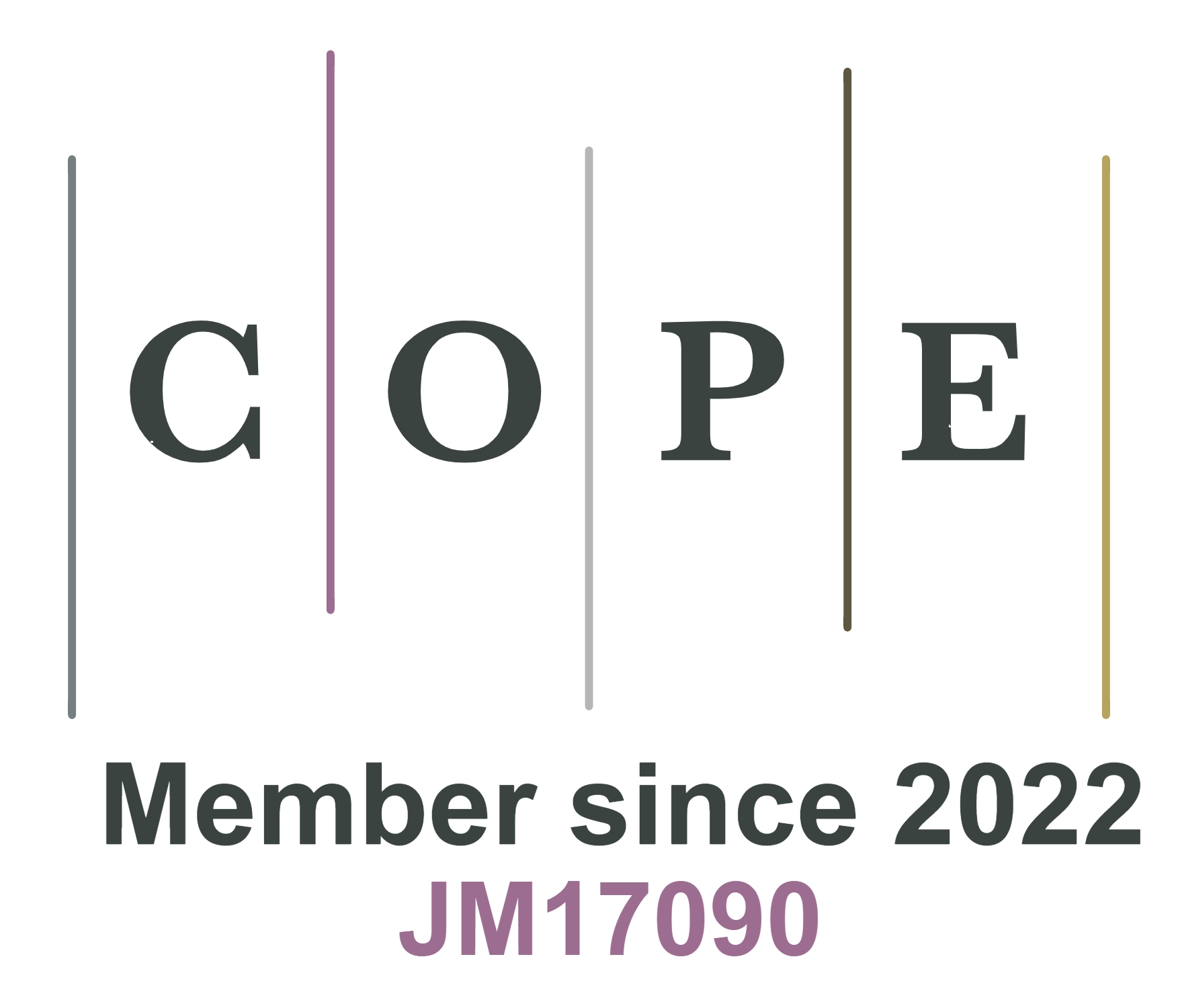REFERENCES
1. Minev IR, Musienko P, Hirsch A, et al. Biomaterials. Electronic dura mater for long-term multimodal neural interfaces. Science 2015;347:159-63.
2. Ma J, Zhong J, Sun F, et al. Hydrogel sensors for biomedical electronics. Chem Eng J 2024;481:148317.
3. Lorach H, Galvez A, Spagnolo V, et al. Walking naturally after spinal cord injury using a brain-spine interface. Nature 2023;618:126-33.
4. Gong S, Lu Y, Yin J, Levin A, Cheng W. Materials-driven soft wearable bioelectronics for connected healthcare. Chem Rev 2024;124:455-553.
5. Mathis MW, Schneider S. Motor control: neural correlates of optimal feedback control theory. Curr Biol 2021;31:R356-8.
6. Verma SK, Tyagi V, Sonika, Dutta T, Mishra SK. Flexible and wearable electronic systems based on 2D hydrogel composites. Anal Methods 2024;16:6300-22.
7. Tsui JH, Leonard A, Camp ND, et al. Tunable electroconductive decellularized extracellular matrix hydrogels for engineering human cardiac microphysiological systems. Biomaterials 2021;272:120764.
8. Chen Z, Liu X, Ding J, et al. Tissue-like electrophysiological electrode interface construction by multiple crosslinked polysaccharide-based hydrogel. Carbohydr Polym 2022;296:119923.
9. Nagamine K, Chihara S, Kai H, Kaji H, Nishizawa M. Totally shape-conformable electrode/hydrogel composite for on-skin electrophysiological measurements. Sensor Actuat B Chem 2016;237:49-53.
10. Fernandes MS, Dias NS, Silva AF, et al. Hydrogel-based photonic sensor for a biopotential wearable recording system. Biosens Bioelectron 2010;26:80-6.
11. Aggas JR, Abasi S, Phipps JF, Podstawczyk DA, Guiseppi-Elie A. Microfabricated and 3-D printed electroconductive hydrogels of PEDOT:PSS and their application in bioelectronics. Biosens Bioelectron 2020;168:112568.
12. Li T, Liang B, Ye Z, et al. An integrated and conductive hydrogel-paper patch for simultaneous sensing of chemical-electrophysiological signals. Biosens Bioelectron 2022;198:113855.
13. Kim J, Won D, Kim TH, Kim CY, Ko SH. Rapid prototyping and facile customization of conductive hydrogel bioelectronics based on all laser process. Biosens Bioelectron 2024;258:116327.
14. Zhang Q, Zhao G, Li Z, et al. Multi-functional adhesive hydrogel as bio-interface for wireless transient pacemaker. Biosens Bioelectron 2024;263:116597.
15. Pan X, Wang Q, He P, et al. A bionic tactile plastic hydrogel-based electronic skin constructed by a nerve-like nanonetwork combining stretchable, compliant, and self-healing properties. Chem Eng J 2020;379:122271.
16. Hu X, Zhang P, Liu J, et al. A self-association cross-linked conductive zwitterionic hydrogel as a myocardial patch for restoring cardiac function. Chem Eng J 2022;446:136988.
17. Zhong S, Lu C, Liu H, et al. Electrical and immune stimulation-based hydrogels synergistically realize scarless wound healing via amplifying endogenous electrophysiological function and promoting macrophage phenotype-switching. Chem Eng J 2024;491:152048.
18. Suarez SL, Rane AA, Muñoz A, et al. Intramyocardial injection of hydrogel with high interstitial spread does not impact action potential propagation. Acta Biomater 2015;26:13-22.
19. Zhou X, Rajeev A, Subramanian A, et al. Self-healing, stretchable, and highly adhesive hydrogels for epidermal patch electrodes. Acta Biomater 2022;139:296-306.
20. Lee H, Lee S, Lee W, Yokota T, Fukuda K, Someya T. Ultrathin organic electrochemical transistor with nonvolatile and thin gel electrolyte for long-term electrophysiological monitoring. Adv Funct Mater 2019;29:1906982.
21. Zhang Z, Yang J, Wang H, et al. A 10-micrometer-thick nanomesh-reinforced gas-permeable hydrogel skin sensor for long-term electrophysiological monitoring. Sci Adv 2024;10:eadj5389.
22. Walker BW, Lara RP, Mogadam E, Yu CH, Kimball W, Annabi N. Rational design of microfabricated electroconductive hydrogels for biomedical applications. Prog Polym Sci 2019;92:135-57.
23. Xue Y, Zhang J, Chen X, et al. Trigger-detachable hydrogel adhesives for bioelectronic interfaces. Adv Funct Mater 2021;31:2106446.
24. Yan L, Zhou T, Han L, et al. Conductive cellulose bio-nanosheets assembled biostable hydrogel for reliable bioelectronics. Adv Funct Mater 2021;31:2010465.
25. Lei W, Peng C, Chiu S, et al. All biodisintegratable hydrogel biohybrid neural interfaces with synergistic performances of microelectrode array technologies, tissue scaffolding, and cell therapy. Adv Funct Mater 2024;34:2307365.
26. Liu R, Wang T, Li G, et al. Self-reinforced hydrogel-based skin-contactable flexible electronics for multimodal electrophysiological signal monitoring and emergency alarming system. Adv Funct Mater 2023;33:2214917.
27. Yu C, Yue Z, Zhang H, et al. Ultra-histocompatible and electrophysiological-adapted PEDOT-based hydrogels designed for cardiac repair. Adv Funct Mater 2023;33:2211023.
28. Hu M, Ren J, Pan Y, et al. Scaled elastic hydrogel interfaces for brain electrophysiology. Adv Funct Mater 2024;34:2407926.
29. Yang J, Bai R, Chen B, Suo Z. Hydrogel adhesion: a supramolecular synergy of chemistry, topology, and mechanics. Adv Funct Mater 2020;30:1901693.
30. Wang J, Wang T, Liu H, et al. Flexible electrodes for brain-computer interface system. Adv Mater 2023;35:e2211012.
31. Zulkifli NA, Jeong W, Kim M, et al. 3D-printed magnetic-based air pressure sensor for continuous respiration monitoring and breathing rehabilitation. Soft Sci 2024;4:20.
32. Chen Y, Chang Z, Liu Y, et al. Tongue-inspired gelatin/poly(acrylate-co-acrylamide)-Fe3+ organic hydrogel with tunable mechanical, electrical, and sensory properties. Eur Polym J 2024;210:112992.
33. Xu K, Li S, Dong S, et al. Bioresorbable electrode array for electrophysiological and pressure signal recording in the brain. Adv Healthc Mater 2019;8:e1801649.
34. Han Q, Zhang C, Guo T, et al. Hydrogel nanoarchitectonics of a flexible and self-adhesive electrode for long-term wireless electroencephalogram recording and high-accuracy sustained attention evaluation. Adv Mater 2023;35:e2209606.
35. Wang C, Wang H, Wang B, et al. On-skin paintable biogel for long-term high-fidelity electroencephalogram recording. Sci Adv 2022;8:eabo1396.
36. Singh S, Gupta BD. Fabrication and characterization of a highly sensitive surface plasmon resonance based fiber optic pH sensor utilizing high index layer and smart hydrogel. Sensor Actuat B Chem 2012;173:268-73.
37. Xu M, Liu Y, Yang K, et al. Minimally invasive power sources for implantable electronics. Exploration 2024;4:20220106.
38. Ma B, Huang K, Chen G, et al. A dual-mode wearable sensor with coupled ion and pressure sensing. Soft Sci 2024;4:8.
39. Yang M, Chen P, Qu X, et al. Robust neural interfaces with photopatternable, bioadhesive, and highly conductive hydrogels for stable chronic neuromodulation. ACS Nano ;2023:885-95.
40. Dutta T, Chaturvedi P, Llamas-Garro I, Velázquez-González JS, Dubey R, Mishra SK. Smart materials for flexible electronics and devices: hydrogel. RSC Adv 2024;14:12984-3004.
41. Park J, Lee S, Lee M, Kim HS, Lee JY. Injectable conductive hydrogels with tunable degradability as novel implantable bioelectrodes. Small 2023;19:e2300250.
42. Zhu J, Zhou C, Zhang M. Recent progress in flexible tactile sensor systems: from design to application. Soft Sci 2021;1:3.
43. Zhuo S, Tessier A, Arefi M, Zhang A, Williams C, Ameri SK. Reusable free-standing hydrogel electronic tattoo sensors with superior performance. npj Flex Electron 2024;8:335.
44. Liu W, Xie R, Zhu J, et al. A temperature responsive adhesive hydrogel for fabrication of flexible electronic sensors. npj Flex Electron 2022;6:193.
45. Ersaro NT, Yalcin C, Muller R. The future of brain–machine interfaces is optical. Nat Electron 2023;6:96-8.
46. Zhang T, Hernandez O, Chrapkiewicz R, et al. Kilohertz two-photon brain imaging in awake mice. Nat Methods 2019;16:1119-22.
47. Guan H, Li D, Park HC, et al. Deep-learning two-photon fiberscopy for video-rate brain imaging in freely-behaving mice. Nat Commun 2022;13:1534.
48. Ke X, Mu X, Chen S, et al. Reduced graphene oxide reinforced PDA-Gly-PVA composite hydrogel as strain sensors for monitoring human motion. Soft Sci 2023;3:1-12.
49. Silva AC, Paterson TE, Minev IR. Electro-assisted assembly of conductive polymer and soft hydrogel into core-shell hybrids. Soft Sci 2023;3:3.
50. Liu J, Tian G, Yang W, Deng W. Recent progress in flexible piezoelectric devices toward human-machine interactions. Soft Sci 2022;2:22.
51. Sun G, Wang P, Jiang Y, Sun H, Meng C, Guo S. Recent advances in flexible and soft gel-based pressure sensors. Soft Sci 2022;2:17.
52. Trautmann EM, O'Shea DJ, Sun X, et al. Dendritic calcium signals in rhesus macaque motor cortex drive an optical brain-computer interface. Nat Commun 2021;12:3689.
53. Lee AT, Chang EF, Paredes MF, Nowakowski TJ. Large-scale neurophysiology and single-cell profiling in human neuroscience. Nature 2024;630:587-95.
54. Li Y, Gu Y, Qian S, et al. An injectable, self-healable, and reusable PEDOT:PSS/PVA hydrogel patch electrode for epidermal electronics. Nano Res 2024;17:5479-90.
55. Zhang Y, Hu Y, Xie B, Yang G, Yin Z, Wu H. Hoffmeister effect optimized hydrogel electrodes with enhanced electrical and mechanical properties for nerve conduction studies. Research 2024;7:0453.
56. Li X, He L, Li Y, et al. Healable, degradable, and conductive MXene nanocomposite hydrogel for multifunctional epidermal sensors. ACS Nano 2021;15:7765-73.
57. Gong HY, Park J, Kim W, Kim J, Lee JY, Koh WG. A novel conductive and micropatterned PEG-based hydrogel enabling the topographical and electrical stimulation of myoblasts. ACS Appl Mater Interfaces 2019;11:47695-706.
58. Dong M, Shi B, Liu D, et al. Conductive hydrogel for a photothermal-responsive stretchable artificial nerve and coalescing with a damaged peripheral nerve. ACS Nano 2020;14:16565-75.
59. Feiner R, Dvir T. Tissue–electronics interfaces: from implantable devices to engineered tissues. Nat Rev Mater 2018;3:BFnatrevmats201776.
60. Chen R, Canales A, Anikeeva P. Neural recording and modulation technologies. Nat Rev Mater 2017;2:16093.
61. Pei F, Tian B. Nanoelectronics for minimally invasive cellular recordings. Adv Funct Mater 2020;30:1906210.
62. Su H, Mao L, Chen X, et al. A complementary dual-mode ion-electron conductive hydrogel enables sustained conductivity for prolonged electroencephalogram recording. Adv Sci 2024;11:e2405273.
63. Xue Y, Chen X, Wang F, Lin J, Liu J. Mechanically-compliant bioelectronic interfaces through fatigue-resistant conducting polymer hydrogel coating. Adv Mater 2023;35:e2304095.
64. Liang Q, Shen Z, Sun X, et al. Electron conductive and transparent hydrogels for recording brain neural signals and neuromodulation. Adv Mater 2023;35:e2211159.
65. Luo Y, Li J, Ding Q, Wang H, Liu C, Wu J. Functionalized hydrogel-based wearable gas and humidity sensors. Nanomicro Lett 2023;15:136.
66. Abidian MR, Martin DC. Multifunctional nanobiomaterials for neural interfaces. Adv Funct Mater 2009;19:573-85.
67. Zou S, Li Y, Gong Z. Shape-deformable micro-LEDs for advanced displays and healthcare. Soft Sci 2024;4:19.
68. Cheng T, Zhang YZ, Wang S, et al. Conductive hydrogel-based electrodes and electrolytes for stretchable and self-healable supercapacitors. Adv Funct Mater 2021;31:2101303.
69. Fan X, Chen Z, Sun H, Zeng S, Liu R, Tian Y. Polyelectrolyte-based conductive hydrogels: from theory to applications. Soft Sci 2022;2:10.
70. Li Y, Wang P, Meng C, Chen W, Zhang L, Guo S. A brief review of miniature flexible and soft tactile sensors for interventional catheter applications. Soft Sci 2022;2:6.
71. Shen S, Zhang J, Han Y, et al. A core-shell nanoreinforced ion-conductive implantable hydrogel bioelectronic patch with high sensitivity and bioactivity for real-time synchronous heart monitoring and repairing. Adv Healthc Mater 2023;12:e2301990.
72. Sheng F, Zhao C, Zhang B, Tan Y, Dong K. Flourishing electronic textiles towards pervasive, personalized and intelligent healthcare. Soft Sci 2024;4:2.
73. Liu Y, Wang C, Xue J, et al. Body temperature enhanced adhesive, antibacterial, and recyclable ionic hydrogel for epidermal electrophysiological monitoring. Adv Healthc Mater 2022;11:e2200653.
74. Han M, Yildiz E, Kaleli HN, et al. Tissue-like optoelectronic neural interface enabled by PEDOT:PSS hydrogel for cardiac and neural stimulation. Adv Healthc Mater 2022;11:e2102160.
75. Kleber C, Lienkamp K, Rühe J, Asplund M. Electrochemically controlled drug release from a conducting polymer hydrogel (PDMAAp/PEDOT) for local therapy and bioelectronics. Adv Healthc Mater 2019;8:e1801488.
76. Kim SD, Park K, Lee S, et al. Injectable and tissue-conformable conductive hydrogel for MRI-compatible brain-interfacing electrodes. Soft Sci 2023;3:18.
77. Hao M, Li L, Wang S, et al. Stretchable, self-healing, transient macromolecular elastomeric gel for wearable electronics. Microsyst Nanoeng 2019;5:9.
78. Yuk H, Zhang T, Lin S, Parada GA, Zhao X. Tough bonding of hydrogels to diverse non-porous surfaces. Nat Mater 2016;15:190-6.
79. Park B, Shin JH, Ok J, et al. Cuticular pad-inspired selective frequency damper for nearly dynamic noise-free bioelectronics. Science 2022;376:624-9.
80. Li X, Sun Y, Wang S, et al. Body temperature-triggered adhesive ionic conductive hydrogels for bioelectrical signal monitoring. Chem Eng J 2024;498:155195.
81. Xue H, Wang D, Jin M, et al. Hydrogel electrodes with conductive and substrate-adhesive layers for noninvasive long-term EEG acquisition. Microsyst Nanoeng 2023;9:79.
82. Shin Y, Lee HS, Hong YJ, et al. Low-impedance tissue-device interface using homogeneously conductive hydrogels chemically bonded to stretchable bioelectronics. Sci Adv 2024;10:eadi7724.
83. Zhang Q, Lu H, Yun G, et al. A laminated gravity-driven liquid metal-doped hydrogel of unparalleled toughness and conductivity. Adv Funct Mater 2024;34:2308113.
84. Hao M, Wang Y, Li L, et al. Tough engineering hydrogels based on swelling-freeze-thaw method for artificial cartilage. ACS Appl Mater Interfaces 2022;14:25093-103.
85. Wei W, Hao M, Zhou K, et al. In situ multimodal transparent electrophysiological hydrogel for in vivo miniature two-photon neuroimaging and electrocorticogram analysis. Acta Biomater 2022;152:86-99.
86. Zhu T, Jiang C, Wang M, Zhu C, Zhao N, Xu J. Skin-inspired double-hydrophobic-coating encapsulated hydrogels with enhanced water retention capacity. Adv Funct Mater 2021;31:2102433.
87. Wu S, Liu Z, Gong C, et al. Spider-silk-inspired strong and tough hydrogel fibers with anti-freezing and water retention properties. Nat Commun 2024;15:4441.
88. Lan L, Ping J, Li H, et al. Skin-inspired all-natural biogel for bioadhesive interface. Adv Mater 2024;36:e2401151.
89. Dou X, Wang H, Yang F, Shen H, Wang X, Wu D. One-step soaking strategy toward anti-swelling hydrogels with a stiff “armor”. Adv Sci 2023;10:e2206242.
90. Li N, Yu Q, Duan S, et al. Anti-swelling, high-strength, anisotropic conductive hydrogel with excellent biocompatibility for implantable electronic tendon. Adv Funct Mater 2024;34:2309500.
91. Zhang Z, Yao A, Raffa P. Transparent, highly stretchable, self-healing, adhesive, freezing-tolerant, and swelling-resistant multifunctional hydrogels for underwater motion detection and information transmission. Adv Funct Mater 2024:2407529.
92. Wei H, Wang Z, Zhang H, et al. Ultrastretchable, highly transparent, self-adhesive, and 3D-printable ionic hydrogels for multimode tactical sensing. Chem Mater 2021;33:6731-42.
93. Zeng T, Wu Y, Lei M. Review: developments and challenges of advanced flexible electronic materials for medical monitoring applications. Adv Compos Hybrid Mater 2024;7:949.
94. Liu J, Lin S, Li W, et al. Ten-hour stable noninvasive brain-computer interface realized by semidry hydrogel-based electrodes. Research 2022;2022:9830457.
95. Li G, Liu Y, Chen Y, et al. Robust, self-adhesive, and low-contact impedance polyvinyl alcohol/polyacrylamide dual-network hydrogel semidry electrode for biopotential signal acquisition. SmartMat 2024;5:e1173.
96. Wang F, Ma M, Fu R, Zhang X. EEG-based detection of driving fatigue using a novel electrode. Sensor Actuat A Phys 2024;365:114895.
97. Luo J, Sun C, Chang B, et al. MXene-enabled self-adaptive hydrogel interface for active electroencephalogram interactions. ACS Nano 2022;16:19373-84.
98. Wang X, Sun X, Gan D, et al. Bioadhesive and conductive hydrogel-integrated brain-machine interfaces for conformal and immune-evasive contact with brain tissue. Matter 2022;5:1204-23.
99. Adewole DO, Struzyna LA, Burrell JC, et al. Development of optically controlled “living electrodes” with long-projecting axon tracts for a synaptic brain-machine interface. Sci Adv 2021;7:eaay5347.
100. Park S, Yuk H, Zhao R, et al. Adaptive and multifunctional hydrogel hybrid probes for long-term sensing and modulation of neural activity. Nat Commun 2021;12:3435.
101. Zhang J, Wang L, Xue Y, et al. Engineering electrodes with robust conducting hydrogel coating for neural recording and modulation. Adv Mater 2023;35:e2209324.









